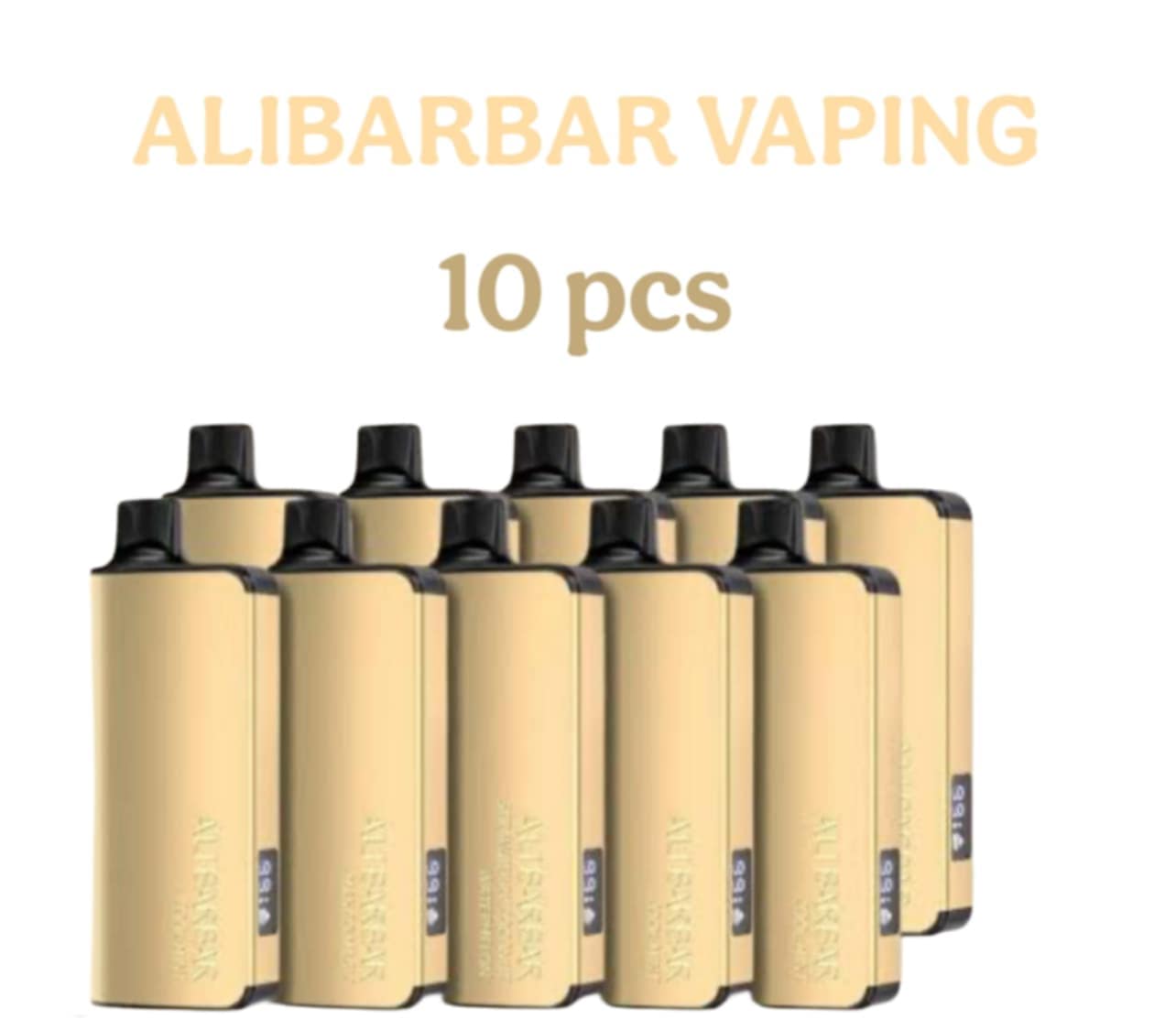Curious about how vaping is evolving across Australia? As we approach 2025, daily vaping habits, regulations, and public attitudes are shifting faster than ever. This guide breaks down the latest research and practical insights, helping you understand the current landscape of Australia vaping daily usage 2025 and what it means for everyday Australians.
Understanding Vaping in Australia: The Essentials
Vaping involves inhaling vapor from electronic cigarettes or similar devices. It has become increasingly popular as a smoking alternative and lifestyle choice. Australia’s regulation and public sentiment toward vaping are unique, with a blend of cautious acceptance and ongoing debate. Daily usage rates provide a window into wider social trends, health concerns, and legal issues influencing this growing phenomenon.
Vaping is not just a trend—it’s a topic shaping conversations in health, youth culture, and policy. By examining Australia vaping daily usage 2025 projections, we can better understand its evolving role in society and make informed decisions, whether you’re an adult smoker, parent, health professional, or simply curious.
The State of Vaping in Australia
Australia’s vaping community is diverse, encompassing adults seeking nicotine alternatives, young people exploring trends, and a significant cohort influenced by digital culture. The landscape is molded by three main factors:
- Stringent government regulations
- Ongoing medical research
- Rising public interest and debate
Nicotine vaping products remain prescription-only under federal law. This has led to a complex patchwork in daily usage patterns across states and territories. New research and market insights forecast notable changes by 2025, making it vital to examine both the numbers and the narratives driving them.
Trends Driving Australia Vaping Daily Usage 2025
As 2025 draws near, several trends shape Australia vaping daily usage:
- Increasing Awareness: More adults are aware of vaping as an alternative to smoking.
- Evolving Regulation: Ongoing changes in rules influence how, where, and by whom vaping products are accessed.
- Technology Advances: New devices and flavors are continually entering the market, impacting user habits.
- Youth Engagement: Concerns over teenage use remain strong, with intensive public health campaigns addressing the issue.
These trends inform usage numbers and public perceptions, affecting everything from retail activity to healthcare advice.
Key Numbers: How Many Australians Vape Daily in 2025?
Accurate statistics matter when discussing vaping. Recent government and independent surveys provide the most reliable figures available. By 2025, authorities project that the number of daily vapers in Australia will likely exceed 600,000 adults. This accounts for roughly 2.4% of the adult population.
- Adults aged 25–39: See the highest daily usage rates.
- Older adults (40+): Show steady but comparatively lower uptake.
- Youths (16–24): Daily usage rates plateau due to tighter controls and education.
The daily user base is still far smaller than traditional smokers, but it is steadily growing, reflecting shifting attitudes and access options.
Who Vapes Daily in Australia—and Why?
It’s not just about age and demographics; motivations tell a deeper story behind Australia vaping daily usage 2025.
- Smokers switching to reduce harm: Most daily vapers are former or current smokers looking for a less harmful alternative to cigarettes.
- Curiosity and flavor enjoyment: Many cite taste and the novelty of flavors as key draws.
- Social and peer influence: Especially prevalent amongst younger adults and urban users.
- Nicotine dependence: Those with established nicotine habits often find vaping more discreet or convenient.
Understanding these motivations is crucial for anyone considering vaping or seeking to support family and friends.
The Role of Regulation in Daily Vaping Habits
Australian vaping laws are among the strictest globally. In 2025, nicotine vaping products remain prescription-only, with authorities monitoring importation and distribution closely. This regulatory environment directly impacts daily usage patterns:
- Prescription requirements: Only those with a valid medical script can legally access nicotine-based vapes.
- Enforcement measures: Customs and police agencies actively enforce import bans on unauthorized products.
- Retail impact: Brick-and-mortar stores focus on nicotine-free options, redirecting many daily vapers toward pharmacies or telehealth services for legitimate access.
These measures aim to curb underage vaping and minimize public health risks. However, anecdotal reports suggest a persistent informal market, highlighting challenges in enforcement.
Health Perspectives: Risks, Benefits, and Controversies
One of the core arguments driving Australia vaping daily usage 2025 is the potential for harm reduction compared to tobacco. While Australian medical authorities remain cautious, ongoing research shapes public messaging.
- Potential benefits: Vaping exposes users to fewer toxic chemicals than traditional cigarettes, making it a popular tool for those quitting smoking.
- Risks and concerns: Long-term effects are still being studied, especially regarding respiratory health.
- Controversy around youth use: Given concerns about addiction and habit formation, regulators adopt a conservative stance on availability and advertising.
Public health agencies prioritize balanced, evidence-driven information, empowering users to weigh personal risks and benefits.
Technology and Product Innovation
Device design and formulation improvements play a significant role in how Australians vape daily. The past few years have seen:
- Sleeker, high-capacity devices: Providing longer battery life and more consistent vapor production.
- Pod systems and disposables: Favored for their convenience, though environmental concerns linger.
- Broader flavor options: Despite regulation, flavor remains a top factor in daily usage, with mint and fruit flavors particularly popular among adults.
Innovation helps sustain engagement, making vaping more customizable and appealing, even as authorities work to control unregulated imports.
Social and Cultural Attitudes
Attitudes toward vaping are dynamic. By 2025, most Australians are familiar with vape devices, even if their opinions differ:
- Skepticism among non-users: Non-smokers often express concerns about secondhand exposure and youth uptake.
- Support among harm-reduction advocates: Those focused on quitting smoking frequently perceive vaping as a positive step.
- Neutral acceptance: For many, vaping has become a background part of urban life.
Acceptance can be highly localized—large cities show greater tolerance, while rural communities are more cautious. Media coverage, peer influence, and visible vapor culture in nightlife districts also help normalize the practice.
Vaping Among Younger Australians
Perhaps the most closely watched aspect of Australia vaping daily usage 2025 is how it affects those under 25. While overall daily use among youth remains lower than among adults, authorities are vigilant:
- Ongoing school initiatives: Education campaigns targeting social media and local communities.
- Tighter age restrictions: Retailers face heavy penalties for non-compliance.
- Peer influence: Remains the strongest factor for experimentation, though daily usage rarely becomes entrenched thanks to education and social norms.
Youth vaping rates remain a sensitive measure of public health strategy effectiveness, so accurate data and timely communication remain priorities.
The Future: Predictions for 2025 and Beyond
What do experts foresee for the next phase of Australia vaping daily usage?
- Continued adult uptake: Provided regulations remain stable, daily usage among adults is expected to increase incrementally as more smokers choose vaping.
- Ongoing youth safeguards: Age verification and community education will likely intensify, ensuring that under-18 daily users remain minimal.
- Refined products: Safer and more efficient devices will become standard, emphasizing user safety and reliability.
- Balanced public discourse: With more research available, nuanced conversations around health, policy, and personal freedom will guide regulation.
Interestingly, while some fear a vaping “epidemic,” the Australian trend points towards moderate, measured growth—primarily among adults with prior nicotine exposure.
Consumer Access and Purchasing Habits
For those choosing to vape daily, understanding access dynamics is important.
- Pharmacy-based purchasing: The main legal channel for nicotine vape products, requiring a prescription.
- Online options: Domestic platforms promote nicotine-free options; international sites face ongoing restrictions, with substantial penalties for illegal importation.
- Disposable vs. refillable products: Adults increasingly favor refillable systems for cost effectiveness and reliability, despite the convenience of disposable vapes.
By 2025, streamlined telehealth services are expected to facilitate prescriptions, but hurdles remain in rural or underserved areas.
Vaping and Social Responsibility
With increased daily usage, questions arise about responsible vaping etiquette:
- Vaping in public spaces: Most cities now restrict use in indoor venues and certain outdoor areas.
- Consideration for non-users: Social norms encourage mindfulness about secondhand exposure and lingering vapor odours.
- Proper disposal: Single-use vapes create waste management challenges—responsible disposal is encouraged by councils and environmental groups.
Adopting considerate habits supports broader societal acceptance and minimizes negative perceptions.
Vaping versus Smoking: Where Do We Stand in 2025?
Data suggests a gradual shift from tobacco to vaping in daily routines:
- Quitting Tool: Vaping remains a cornerstone of countless quit-smoking journeys.
- Dual use persists: Many daily vapers also smoke occasionally, although full transitions increase as confidence in vaping rises.
- Public health cost: Early analysis suggests potential healthcare savings if tobacco use continues to decline, but ongoing vigilance is essential.
The intersection of harm reduction, healthcare, and personal choice fuels policy and debate—highlighting the importance of accurate, up-to-date information and practical support.
The Role of Education and Support Services
Daily users—and those considering vaping—benefit greatly from professional guidance:
- Healthcare providers: Remain the best resource for personalized advice, especially when prescribing or managing nicotine products.
- Community groups: Offer support for quitting smoking and highlight safe, legal ways to access vaping products.
- Online resources: Health department websites and reputable forums provide unbiased, practical information.
Proactive engagement with these supports leads to more successful quit attempts and healthier daily habits.
Final Thoughts: Is Vaping Here to Stay?
Australia vaping daily usage 2025 reflects an evolving, multifaceted reality. With a stable adult user base, effective prevention for under-18s, and robust regulation, vaping is poised to remain part of Australia’s harm-reduction toolkit—while ongoing research and policy debates shape the years ahead.
Conclusion
Vaping continues to reshape Australia’s approach to nicotine and public health, offering new solutions and challenges in 2025. Stay informed, seek expert advice, and make decisions that best support your wellbeing and community.

























